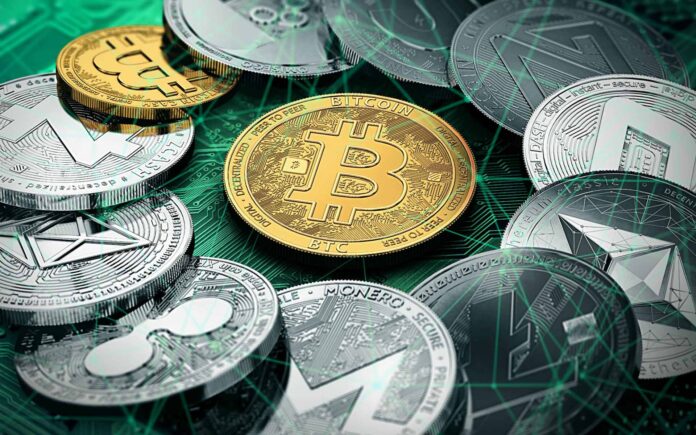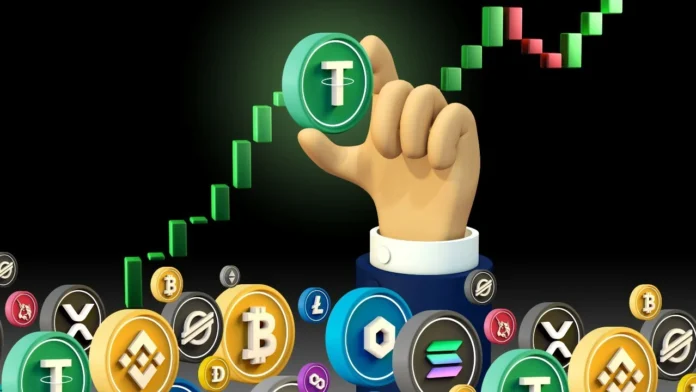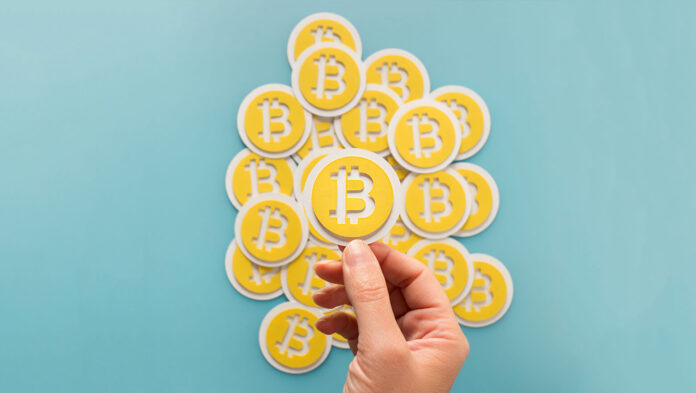The term “cryptocurrency” is used perhaps more often than it should as a blanket term for all the different crypto- or digital currencies. Usually, people mean coins, but it has a broader application since coins are a separate entity from altcoins and tokens, as well as other emerging online-only currencies. There are roughly nine types of cryptocurrency: coins, altcoins, stablecoins, tokens, NFTs, and then a wider developing landscape of Defi products. These categories are based on several factors. Not all of the definitions are agreed upon, and some could split into distinct groups of their own, or a new type of currency could land without notice. Let’s take a look at the ones we’ve mentioned in turn, but before we do, we need to understand blockchains.
1. Blockchains

Blockchains are essentially a long list, mostly of transactions that are recorded in blocks. Other independent users verify these blocks, and if these verifiers agree on a transaction, if there is no discrepancy, then the block is closed and encrypted; another block is created that has information about the previous block within it—thus creating a chain of blocks, hence blockchain. The information in previous blocks cannot be changed without it affecting the blocks ahead of it, so there is no way to alter a blockchain, and multiple user verification ensures the integrity of the blocks. This concept, with other security protocols, provides the secure nature of a blockchain. The processing associated with verifying these chains is considerable, and mining has become a cottage industry, with miners being paid in coins for verifying and encoding blocks successfully.
2. Coins
Coins are based on a blockchain, a decentralized, distributed, and public digital record that keeps track of that coin’s individual and associated transactions across many computers. The upshot is that this record cannot be altered retroactively without having to alter every single block across every network. Every coin comes along with a developing blockchain so that Bitcoin is on the Bitcoin blockchain, and Ethereum is on the Ethereum blockchain.
3. Altcoins

This is an emerging definition that is mostly being used to describe any coin other than Bitcoin, which was the world’s first cryptocurrency. These include Namecoin, Peercoin, Litecoin, and Auroracoin. It also includes Dogecoin, which, like the others, can be tracked on OKX.com. The altcoins Ethereum, Ripple, Omni, and NEO, have their own separate blockchains.
4. Tokens
Also included under the altcoin definition is tokens. These are not coins in the sense of those above; they are instead the digital representation of an asset or utility within a blockchain. In effect, they rest on top of the blockchain and are tied to its value. They are not native to the blockchain on which they reside, and the blockchain does not produce them. They run like a speculation on that chain. They are coded to enable smart contracts on blockchains and can be transferred from one chain to another. The tokens are conveniently embedded in a self-executing computer program and can operate without a third-party platform, which allows them to be fungible and easily traded. Tokens can, in some instances, become coins, such as when the project develops its own blockchain and migrates its tokens to the new blockchain as a coin. This was the case with Binance Coin, Tron, and Zilliqa, which originated as tokens on the Ethereum blockchain.
5. Stablecoins

Stablecoins are an attempt to make cryptocurrencies less volatile and are more useful for transactions rather than investment speculation. The value of the stablecoin is “pegged” or tied, to another hard currency or commodity. Even the most stable cryptocurrencies can see such fast rises and falls. It would be a full-time job for a company to track it adequately enough to accept it as payment for food or services. Stablecoins attempt to take the best from both worlds, the innovation of cryptocurrency with the relative stability of an established currency. Additionally, Stablecoins hopes to achieve price stability by either holding back reserve assets as collateral or using algorithmic formulas designed to control supply.
6. NFTs
Non-Fungible Tokens (NFTs) have been the buzzword lately. Non-fungible is a way of saying unique, in that there is only one of that thing. It is not able to be duplicated. Most commonly, this is a creative piece of art, a song, or a sculpture, but it can also be a program. The thing you need to know about NFTs is that they are digital property that is treated like a cryptocoin, which means that it is associated with a blockchain, which means that it can be bought, traded, or gifted, but it cannot be duplicated. The jury is still out as to how desirable or practicable NFTs will be in the future, but with the push to move more of our lives online by Mark Zuckerberg, if the VR realm is one that people prefer to spend most of their time in, then NFTs will play a big future in that.
7. Defi

Decentralized Finance (Defi) is still in the beginning stages of life and it’s easier to describe its potential than to describe what it actually is. It aims to create a system of payment and financial products that operate outside of any financial, state, or government institution. Instead of a company that arranges loans and assesses risk, you have a computer program that takes advantage of blockchain technology to ensure financial validity. It looks great on paper, but there are large questions that loom, and its strength in being unregulated by any institution or body seems to be an equal weakness since who cleans up the mess when something goes wrong? Who is responsible for investigating a financial crime that occurs in a system held in different countries, protocols, and Defi apps? Moreover, who would enforce the regulations, and how?
Other concerns are system stability, energy requirements, carbon footprint, system upgrades, system maintenance, and hardware failures—how are those managed, by whom, and for what benefit?
Summary
The cryptocurrency market is expanding at a fast and unpredictable rate, and the future can hold anything in store. That can be both frightening and exciting. It will take a lot of people trying a lot of new things to test and develop these new technologies. Time will tell.









